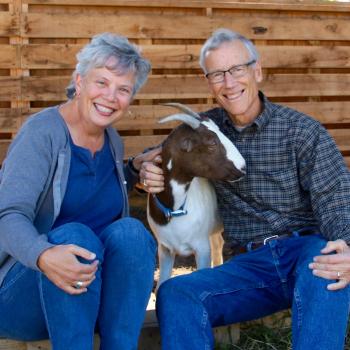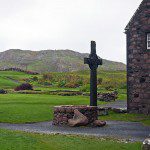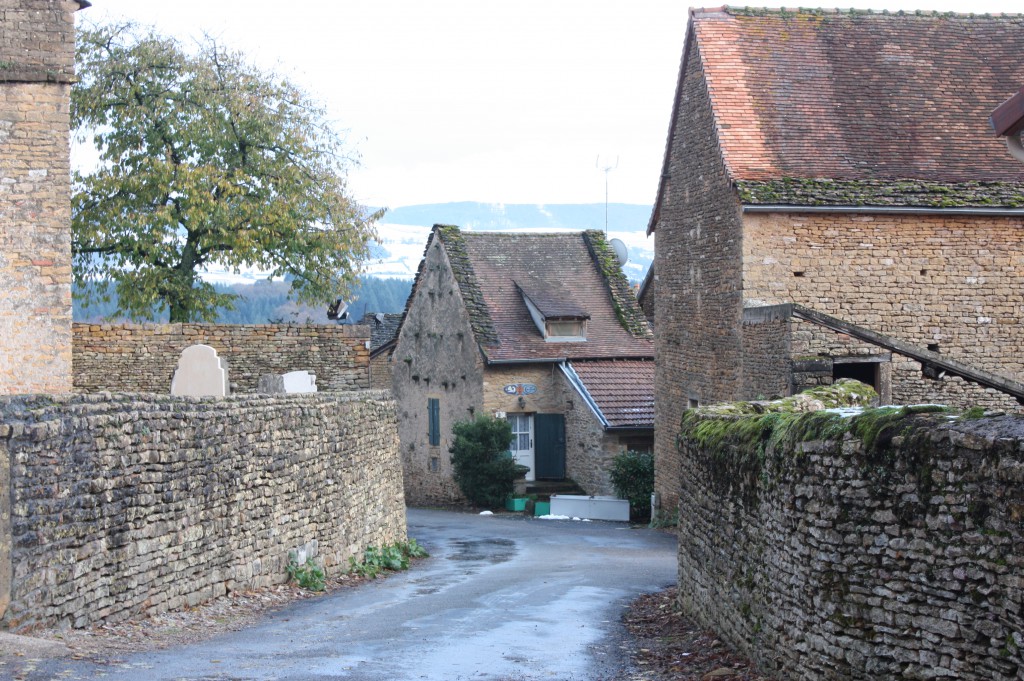
At last we come to the end of our Holy Rover tour of northern Europe. This last post is about a place some of you may be familiar with because of its music: Taizé, an ecumenical community in France whose influence has spread throughout the world. In my home church, we sing Taizé chants nearly every Sunday. These meditative, simple songs typically feature a line or two from the Psalms, creating a kind of lectio divina in music.
Those who sing this style of music may not realize it’s rooted in a particular place: Taizé, which is located about an hour’s drive north of Lyon in east-central France. Surrounded by rolling pastures and scenic vineyards, the village is home to only about 100 people. The Taizé Community occupies a set of buildings on the outskirts of the town.
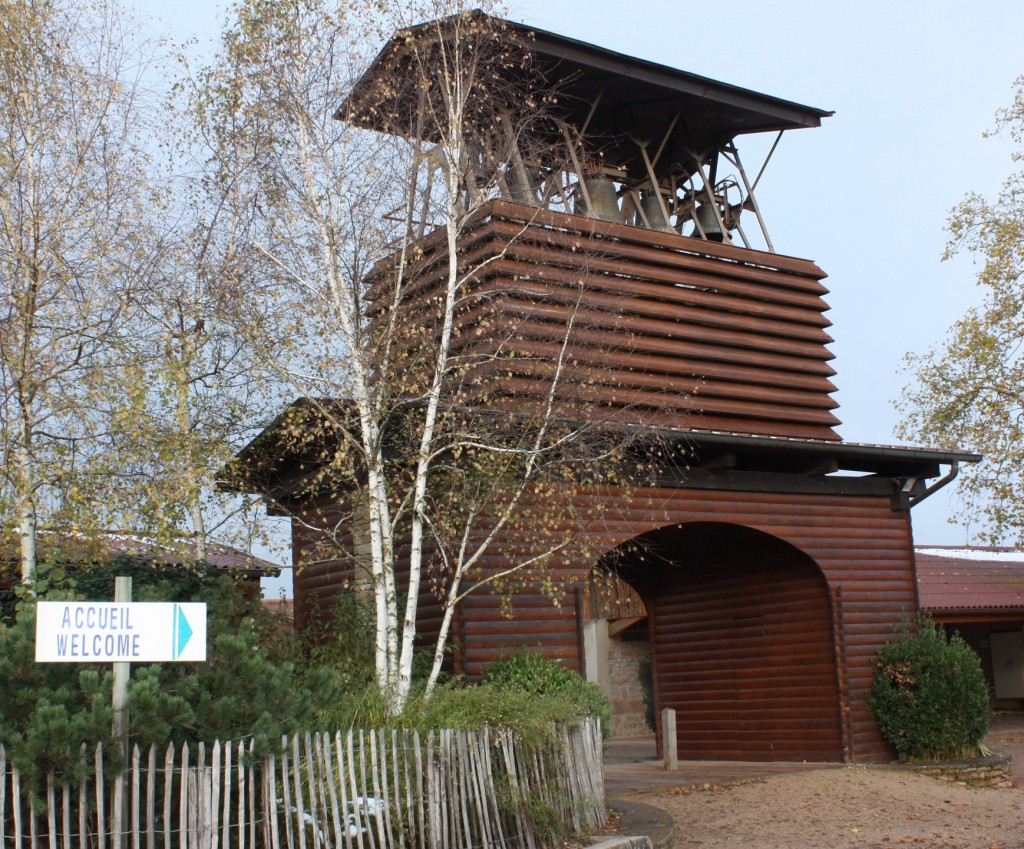
I must admit that my first reaction to Taizé was disappointment. I was tired, as this was our last day of touring at the end of a three-week trip. The weather was cold and bleak. And unlike many of the religious sites I’ve visited over the years, Taizé isn’t particularly scenic or beautiful. Instead it’s made up of a collection of utilitarian buildings surrounding a no-frills church. But by the time we left the next morning, I realized my initial reaction to Taizé was wrong. For even after only a brief visit there, I came away convinced that this is one of the most significant pilgrimage sites I’ve ever visited.
The community was founded during WWII by Brother Roger, a native of Switzerland who came to France (the country of his mother) to help those whose lives were devastated by the conflict raging across Europe. He settled in Taizé and began sheltering Jews and others fleeing from the Nazis, but in 1942 was forced to flee because his activities were discovered by the authorities. In 1944 he returned to Taizé and continued ministering to those in need, helped by a small group of brothers who had joined the ecumenical religious community he had founded.
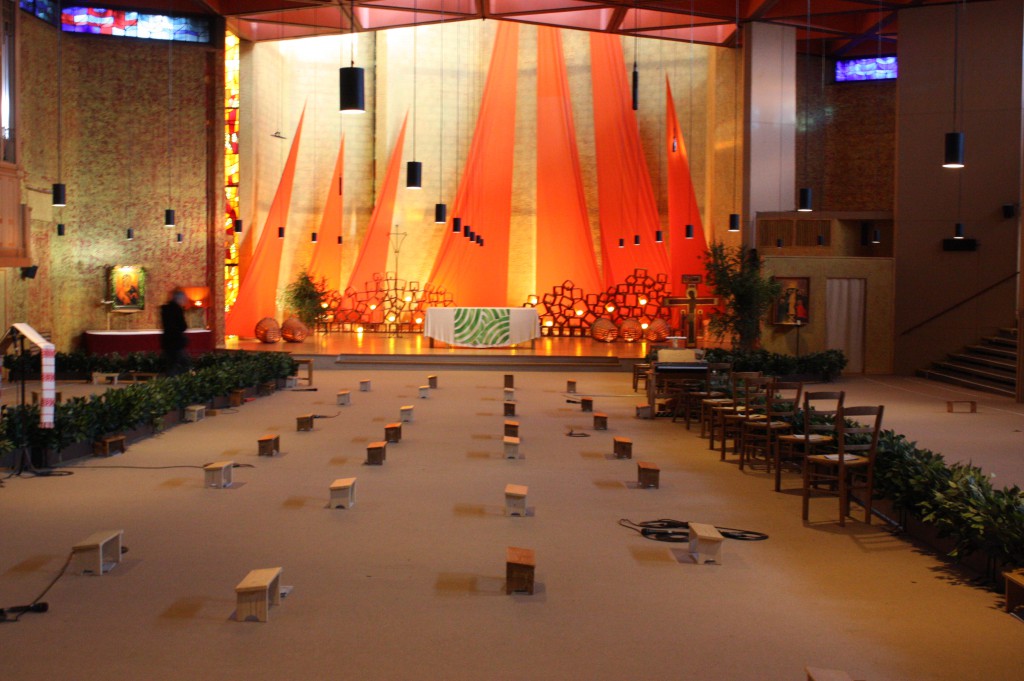
In the 1960s the quiet life of the Taizé Community began to change as young people began coming in ever-larger numbers to the village. To meet their spiritual hunger, Brother Roger developed a style of worship and singing that was suitable to pilgrims hailing from many different countries. Because Taizé songs have so few words and are repeated multiple times, it’s easy to sing them even if you don’t speak the language or aren’t particularly musical. Over the years the liturgy at Taizé became both increasingly simple and more deeply rooted in the monastic traditions of chant and contemplation.
Today Taizé attracts thousands of young people from around the world (while pilgrims of all ages are welcomed, priority is given to youth). During the height of the summer, there are up to 6,000 people in Taizé at the same time, gathering for worship services held three times a day in its church. Because the building is far too small to accommodate such numbers, the church’s walls can be opened so that those sitting outside can participate. Each service includes a few Bible passages read in multiple languages, an extended period of silence, and Taizé songs.
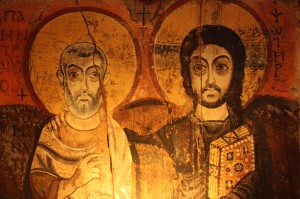
Brother Roger’s community has grown to include more than 100 brothers from 30 countries. About 65 live on site, while the rest do mission work around the world. The brothers come from a variety of denominations and do not give up that affiliation to join the community. The village is also home to three groups of Roman Catholic nuns, who assist in the hosting of the huge numbers of pilgrims.
Visiting in November, we missed seeing Taizé in full flower. But even with only a few hundred people in residence, it still buzzed with energy. At dinner that evening, we visited with young people from Sweden, England, Holland, Finland, Japan and Germany.
We were especially pleased to meet Jason Hill, a Presbyterian minister who has come on pilgrimage to Taizé several times and is discerning a call to join its community of brothers. “During the height of the pilgrimage season, Taizé is like a United Nations of languages, nationalities and cultures,” he told us. “But even though people come from many different backgrounds, there’s an incredible sense of unity and love that is formed here through worship and the discussion groups that take place each morning. People are asked to commit to spending a full week here so they can fully immerse themselves in the experience. It’s intense and life-changing.”
The brothers, who support themselves by making and selling handcrafts, lead discussion groups, provide spiritual direction, and develop liturgical materials. But most of the day-to-day work at Taizé is done by volunteer staff, who are young people who come for an extended period of service, typically six months or a year. The pilgrims themselves also help with cooking, cleaning and the many other tasks involved with hosting thousands of guests each year.
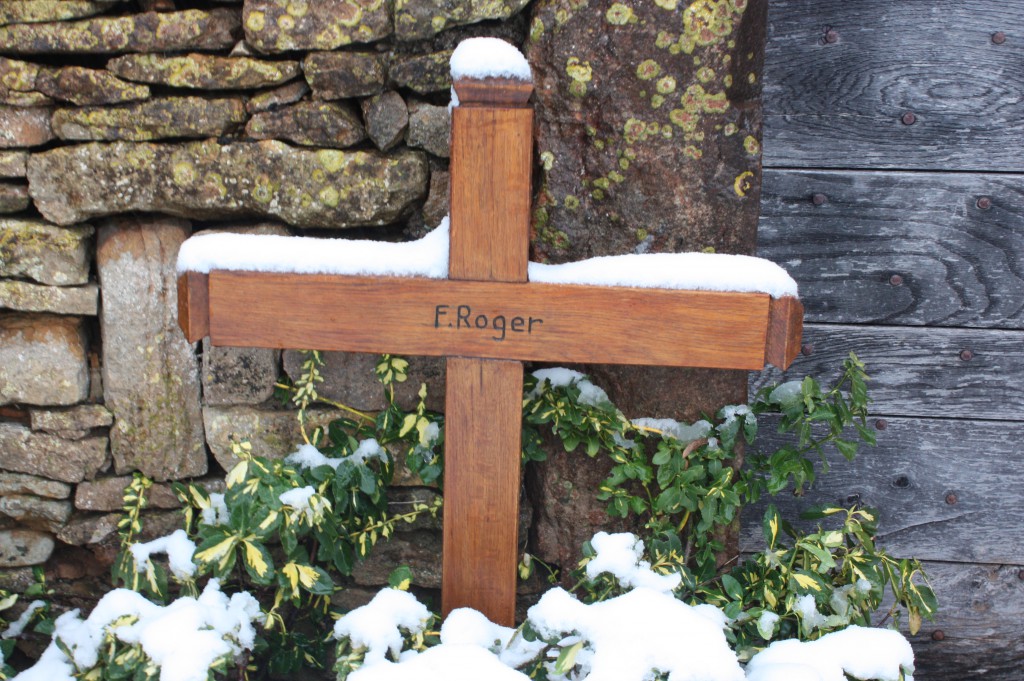
After dinner, Jason walked with us down the hill a short way to the small, stone church where the community of Taizé had begun. Outside its front door is the grave of Brother Roger, who at the age of 90 was killed during a Taizé service by a mentally disturbed woman.
“There were many thousands of people at his funeral, including religious leaders from around the world,” said Jason. “While Brother Roger’s death was a terrible tragedy, the community rallied around the woman and her family and forgave what had happened. It was a powerful example of how they live out their values of peacemaking and reconciliation.”
After our conversation with Jason, we went to the evening service in the church, which was filled with about 300 worshipers, most sitting on the floor. The lights were low and most of the illumination came from the dozens of flickering candles on the altar. The most moving part was the singing. The monks in the center of the church created a low-pitched anchor for the more soaring voices of the women, filling the womb-like space with resonance and beauty. It was one of the most remarkable worship experiences I’d ever had. At the end of the service the monks filed out silently but the music continued, led by the young people themselves. After an hour I finally left, but the songs were still being sung.
As I went back to our dorm room, I encountered a bewildered, exhausted young woman on the sidewalk. She explained in halting English that she had just arrived from South Korea and was looking for her room.
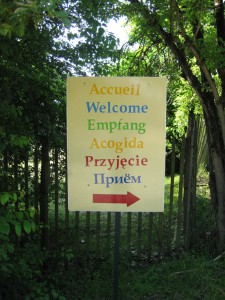
After I helped her connect with some friendly staff members, I marveled at the power of Taizé to lure pilgrims from around the world. “We’ll take good care of her!” the young people called to me as we parted. I’m sure they did.
Since leaving that small village, I’ve thought often of our too-brief stay at Taizé. In touring Europe, I’ve often felt that many of its religious sites seem more like art museums than living places of worship. In Taizé , in contrast, I found the simplest of buildings, but a thriving, living community. There’s a lesson in that, certainly. If Christianity has a future in Europe, it may well be sparked by what’s going on in Taizé. After all those thousands of young people go back to their homes, they bring part of the spark of Taizé with them. Most of them will likely settle into a comfortable agnosticism, I expect, like so many of their fellow Europeans. But some will remember their experiences in that darkened, holy church, that sense of being surrounded by song and prayer.
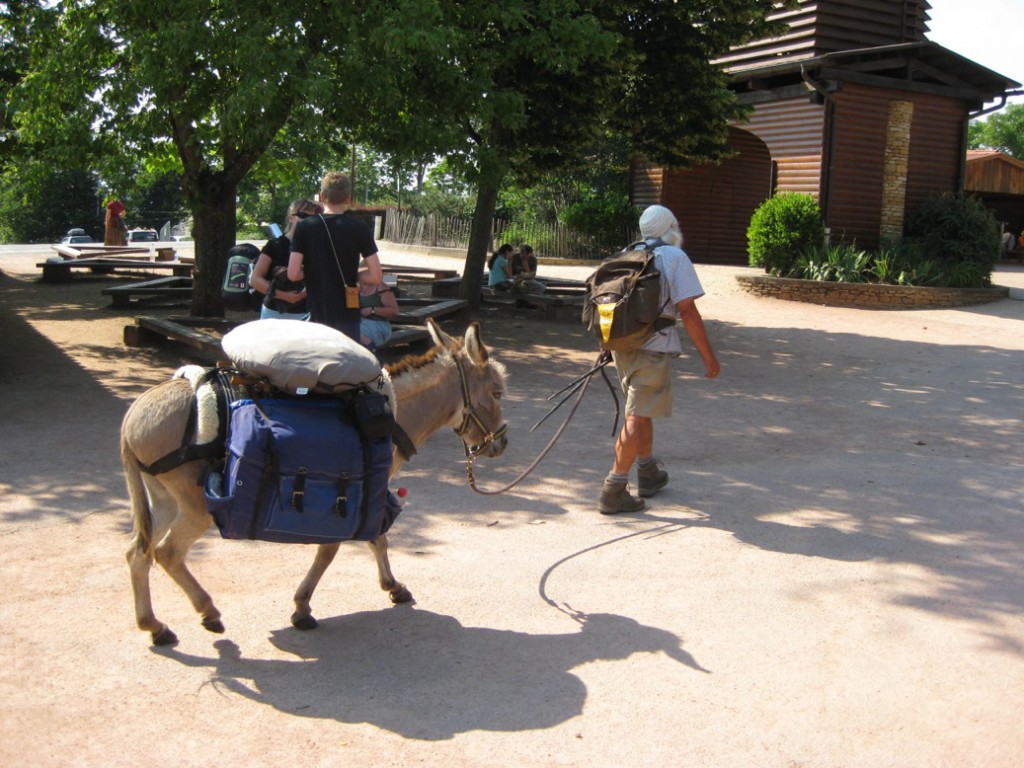
The next morning a light snow was falling as we carried our bags to the car. I could hear the faint sound of music coming from the church. As we drove away I vowed to come back one day, to stay longer and immerse myself more deeply in the rhythms of life here. But in the meantime, I am happy to know that the singing continues in Taizé, day and night, a sign of hope in a dark world.
The philosopher Paul Ricoeur, who visited the community many times, said this about Taizé:
What do I come looking for in Taizé? I would say to experience in some way what I believe most deeply, namely that what is generally called “religion” has to do with goodness. To some extent the traditions of Christianity have forgotten this. There has been a kind of narrowing, an exclusive focus on guilt and evil. Not that I underestimate that problem, which was a great concern of mine for several decades. But what I need to verify is that however radical evil may be, it is not as deep as goodness. And if religion, if religions have a meaning, it is to liberate that core of goodness in human beings, to go looking for it where it has been completely buried. Now here in Taizé I see goodness breaking through, in the community life of the brothers, in their calm and discreet hospitality, and in the prayer.
And finally, a sample of Taizé (note: this is not my video). The song is Nada te Turbe (Let Nothing Disturb You).


